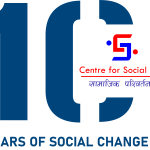
Securing Your Future: Social Security Benefits and Challenges in Nepal
Image source: https://cdn.aarp.net/content/dam/aarp/re 1
Author: Bhawana Adhikari
Social welfare security refers to a collection of policies and programs that aim to safeguard and provide support for at-risk groups, such as the elderly, disabled individuals, single women, and children. These programs offer financial assistance, healthcare services, and other forms of aid to individuals who are unable to sustain themselves. Nepal has several notable social welfare security initiatives, such as social security allowances and the Child Grant program, which have been demonstrated to positively impact vulnerable populations. In fact, Nepal was one of the early pioneers of social protection in South Asia. One of these earliest measures was the introduction of Old Age allowance in 1994, which provided a modest monthly payment to citizens aged 75 and over. Since then, both the coverage and amount of the allowance have gradually increased. Nowadays, social pension for elderly people has become a crucial part of Nepal’s social protection system.
In Nepal, there are currently two types of social security systems in operation, namely contributory and non-contributory. A contributory social security scheme requires the beneficiary to contribute a certain amount with the expectation of receiving protection in the future, while in a non-contributory scheme, the state provides protection to the beneficiary through funding obtained from taxes. The principal social insurance schemes that contribute to the system are the Social Security Fund (SSF) for formal workers in the private sector and the Employees’ Provident Fund for public sector employees. Only workers in the formal sector can participate in these schemes and are entitled to benefits. (Nepal’s Social Protection System Reinforces Inequality, 2023).

Image source: https://openknowledge.worldbank.org/serv 1As we see in the figure, the rise in social protection expenditure suggests increasing attention and activeness of the government in this area. However, despite the existence of various kinds different social security schemes in Nepal, there are concerns about the effectiveness of these programs in reaching the most marginalized communities. Studies show that only 17% of Nepalis are covered by at least one social protection benefit, which puts Nepal almost at the bottom of the ‘Sustainable Development Goals of the United Nations tracker (ILO, 2022). Reportedly, one of the challenges, why such a small portion of the population is covered by these schemes, is the stigma associated with seeking government aid. Many women, particularly from Dalit and Muslim communities, and informal workers express concerns about discrimination and exclusion due to a lack of education and even overall awareness. Even though the new guidelines of the Social Security Fund (SSF) aim to include workers from the informal sector, foreign employment, and self-employed individuals, the amount of assistance offered to them is minimal.
Similarly, as reported in 2022, Child Grant social protection scheme covered just about 40% of children under five and a mere 9.5% of all children in the country. As of yet, Child Grant’s payment amount is NRs. 532 per month, which is the lowest of all benefits provided by the country.
A 2021 study conducted by UNICEF found that by 2035, providing child grants to all children up to the age of 17 would amount to less than 0.7% of GDP annually yet potential advantages for families in terms of economic and social outcomes could be significant, with opportunities to reduce family poverty by as much as 16.8%. This could provide families with the means to obtain improved nutrition, healthcare, and education.
Assistance from international groups and associations may aid in filling the financial voids that arise during the initial phase of implementing or expanding a social welfare initiative, as well as during times of crisis. However, ensuring the longevity of a social protection system requires funding from within the country and use of regional resources to sustain the social welfare expenses.
In today’s context, social security benefits have played a crucial role in ensuring financial stability and security for millions of people. However, it is important to acknowledge that there are still many who are excluded from these programs due to various factors, especially marginalized and vulnerable sections of the society . To fill this gap, Nepal must work towards greater inclusion and ensure that everyone has access to the support they need to live a dignified life. By addressing the root causes of exclusion and promoting policies that prioritize equity and justice, Nepal is capable of building a just and equitable society for all. In order to address all these issues, it is important for government bodies and organizations involved in social welfare security to establish credibility and to secure adequate funding to bridge existing resource gaps. Therefore, comprehensive social security benefits are crucial for promoting the well-being and security of individuals and families, particularly of those facing disproportionate economic or social challenges.
References:
Nepal's Social Protection System Reinforces Inequality. (2023, February 1). Human Rights Watch. Retrieved March 6, 2023, from https://www.hrw.org/news/2023/02/01/nepals-social-protection-system-reinforces-inequality
Nepal's Social Protection System Reinforces Inequality. (2023, February 1). Human Rights Watch. Retrieved March 6, 2023, from https://www.hrw.org/news/2023/02/01/nepals-social-protection-system-reinforces-inequality
Only 17 percent of Nepalis covered by social protection benefit, ILO says. (2022, September 1). The Kathmandu Post. https://kathmandupost.com/money/2022/09/01/only-17-percent-of-nepalis-covered-by-social-protection-benefit-ilo-says
Pandey, J. (2021, December 31). Review and Assessment of Public Expenditure on Social Assistance in Nepal | Journal of Social Protection. Nepal Journals Online. Retrieved March 6, 2023, from https://www.nepjol.info/index.php/jsp/article/view/43774
World Bank Document. (n.d.). World Bank Document. Retrieved March 6, 2023, from https://openknowledge.worldbank.org/bitstream/handle/10986/36329/Main-Report-FY11-FY20.pdf?sequence=1&isAllowed=y
The graphics, views and opinions expressed in the piece above are solely those of the original author(s) and contributor(s). They do not necessarily represent the views of Centre for Social Change.

Bhawana Adhikari is an undergraduate economics student at Indraprastha College for Women, University of Delhi after completing her schooling from Kathmandu. Bhawana has varied interest in research and academic studies. Her main areas of interest are development economics and policy formation and has the skills to view governance through the lens of economic trends and public rights.
©2021 Centre for Social Change, Kathmandu
